Until now, the times it had landed in Aranda de Duero, in the province of Burgos, it had always been on the occasion of a gastronomic stop In the numerous trips I have made since Madrid and northern Spain.
his famous lamb It is a strong argument for this route to be a highly recommended stop.
But recently I have had the opportunity to spend a little more time in Aranda de Duero, historic capital of the region Ribera del Duero, so linked to wine.
During this visit I had the opportunity to participate in a guided tour of Aranda de Duero in which we were able to see the main places of tourist interest in this town in the province of Burgos.
All the information in detail
What to see and do in Aranda de Duero
Before your visit, at the outset you should know that Aranda de Duero It is part of the wine-growing territory of the Ribera del Duero in Burgos, so wine culture has a great role.
How to visit an underground winery in Aranda de Duero
Therefore, one of the most interesting visits is to visit one of the numerous underground cellars that there is in this town, of which they will inform you in the Tourist Office.

In the historic center, 135 wineries are cataloged that extend along 7 kilometers to preserve the wines of the region. DO Ribera del Duero, and of which the oldest began to be built in the 13th century.
Bodega de las Ánimas in Aranda de Duero
In this regard, you can visit the Bodega de las Animas, which is museumized and houses a Wine Interpretation Center.
Here you have information with schedules to visit the Bodega de las Ánimas, both on your own and on a guided tour.
El Lagar de Isilla Winery in Aranda de Duero
Another option you have is visit the winery from one of the emblematic restaurants in the center of Aranda de Duero, El Lagar de Isilla Winery, which is also a museum.
This winery was in operation for wine production until the 60s, and then it was abandoned for 49 years.
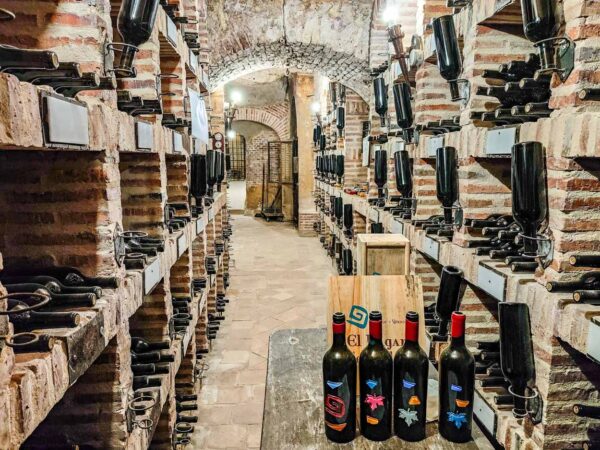
Its rehabilitation has been a personal project of José Andrés Zapatero, a hotelier with a passion for wine, who in 1995 acquired the aforementioned restaurant, rehabilitated the winery and once again made wine in the cave, producing up to 30.000 bottles.
At present it is a museum that can be visited for free, which has received up to 60.000 visitors a year.
Museum of Sacred Art in Aranda de Duero
In addition to strolling through the streets of the historic center, where its Plaza Mayor, riding a Aranda de Duero you can visit some museums.
To highlight, the Sacred Art museum what do you find in the church of san juan, a Gothic building from the 15th century in which its south façade stands out, with its fine arches, and inside three naves, its ribbed vaults.
Casa de las Bolas Museum in Aranda de Duero
Another notable museum is the Ball House, a 15th century building that currently houses the permanent collection Felix Casañas with pictorial works from between the 17th and 20th centuries.
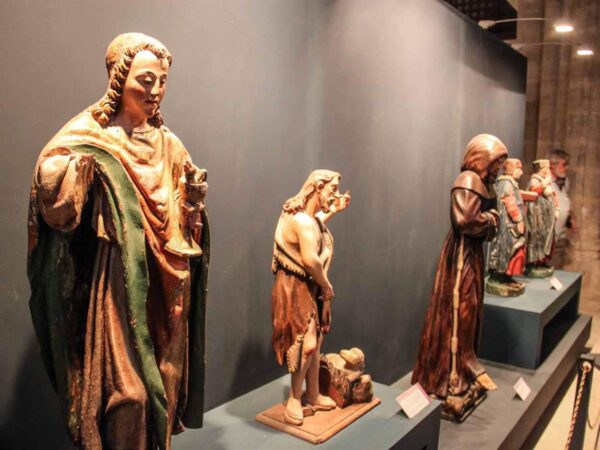
Church of Santa María la Real in Aranda de Duero
But the central point of your visit of Aranda de Duero must be the church of Santa María la Real, axis of the historic center of the Burgos town.
This church is not only the main monument of Aranda de Duero, but it will surprise you with its splendor HOME, which is considered one of the best samples of the flamboyant gothic in Spain.
Santa Maria la ReaIt has its predecessor in a Romanesque church that was replaced by a new temple of larger dimensions, which would also exceed those of the nearby one. church of san juan.
The works began in 1439 and were completed at the beginning of the XNUMXth century.
This gothic church It has a floor plan with the characteristic Latin cross, with a central nave 20 meters high, but it presents a curious singularity: it has four ships, which produces the false sensation of a square interior.
ORGANIZE your TRIP
- Don't forget your TRAVEL INSURANCE with a 5% discount
- Book the HOTEL for your trip
- RENT a CAR for your trip
- The best TOURS and EXCURSIONS in Spanish
- NO-LINE TICKETS for museums and monuments
- Best FREE TOURS around the world
- Book your TRANSFER from the airport
- eSIM card with INTERNET at the best price

This even number of naves contrasts with what is usual in churches, which is an odd number of one, three or even five naves.
And the question is,why the church of Santa María de Aranda de Duero has four navess?
The answer they gave me is very simple.
When building the new church, it was wanted to maintain the tower of the previous Romanesque building, which also had a defensive function.
But the work began on the current side façade, where the splendorous doorway was located, and as the construction of the naves progressed, they realized that they could not integrate the tower into the new building.

The solution, build a fourth warehouse to save this excess slack, so that the tower that is the current bell tower was saved.
What to see in Santa María church in Aranda de Duero
The façade of the church was built in 1515 and is a monumental stone altarpiece.
The eardrum plays the greatest role The Virgin, to whom the church is dedicated, with various scenes from his life, such as the Jesus birth o the Annunciation.
The upper part of the cover shows scenes of passion of Christ.
In the highest part of the cover the shields of the Catholic kings y Juana I of Castile and her husband Philip the Beautiful, and you should also look at the wooden door leading to the church, Renaissance style.
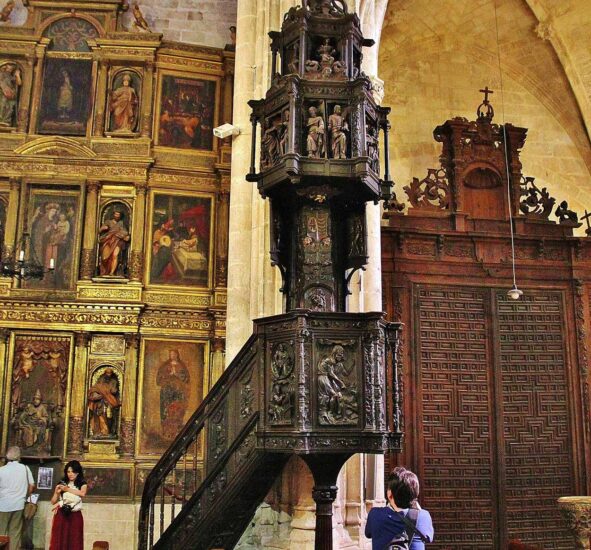
At interior of the church of Santa María la Real, without a doubt it will catch your attention plateresque pulpit from 1547 that presides over the central nave and is built in walnut wood.
But you also have to look at the choir access staircase, made of stucco and with successive decorations of Mudejar, Gothic and Renaissance styles.
And, likewise, in the church the baptismal font from the thirteenth century.
In short, an interesting visit to complement your gastronomic stop in Aranda de Duero.
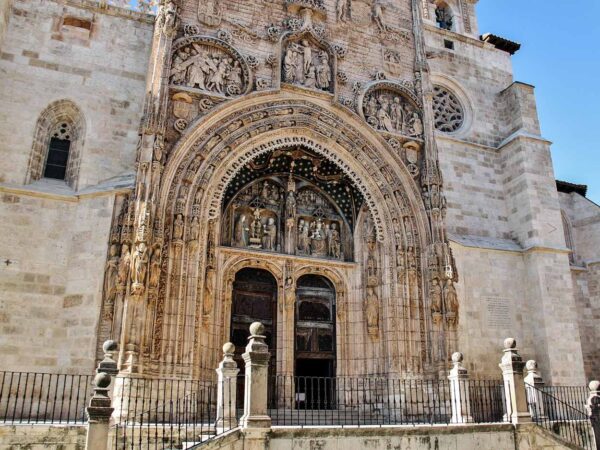
Map: how to get to Aranda de Duero
Aranda de Duero It is located just under two hours to the north From Madrid one hour south from Burgos




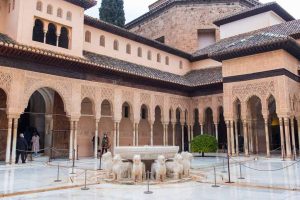
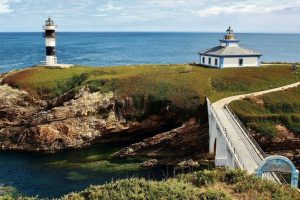











Slip! Of course four. If on some trip I find another church with four naves, I will let you know.
Let me know if you find one 🙂
Nice post about Aranda and very curious the story why the church of Santa María la Real de Aranda has three naves.
Of four, Jesus, of four 🙂